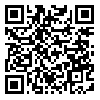BibTeX | RIS | EndNote | Medlars | ProCite | Reference Manager | RefWorks
Send citation to:
URL: http://journal.nkums.ac.ir/article-1-219-en.html

 , A Khakshour *
, A Khakshour * 
 , HR Kianifar
, HR Kianifar 
 , F Farahmand
, F Farahmand 
 , M Mahdizadeh
, M Mahdizadeh 
 , GH Fallahi
, GH Fallahi 
 , HA Esmaeili
, HA Esmaeili 
 , SJ Purnaghi
, SJ Purnaghi 

Abstract Background & Objective: Early diagnosis of biliary atresia is very important for better outcome of patients. Ultrsonography is one of the tools for early differentiating of biliary atresia from other causes of neonatal cholestasis. It has been reported that triangular cord sing (TACS) in sonography is a reliable sign for diagnosis of biliary atresia. The aim of this study was to reassess the accuracy of TACS alone and coupled with abnormal gallbladder in the diagnosis of biliary atresia. Material & Methods: Infants with prolonged cholestatic jaundice underwent ultrasonography and liver biopsy. Results of ultrasound scans (TASC and gallbladder abnormality) were compared with histopathologic findings. Sensitivity, specificity, positive predictive value, negative predictive value and accuracy of ultrasonographic findings for diagnosis of biliary atresia based on liver histopathology were calculated. Results: The sensitivity, specificity and accuracy of TACS for diagnosis of biliary atresia were 36%, 95% and 77% respectively. Positive predictive value and negative predictive value were 77%. The sensitivity and specificity of gallbladder abnormality for diagnosis of biliary atresia were 36% and 88% respectively. Positive predictive value of TACS couple with gallbladder abnormality for diagnosis of biliary atresia was 100%. Conclusion: The ultrasonographic TACS is very specific for diagnosis of biliary atresia. Positive predictive value and accuracy of this sign is much higher than of gallbladder abnormality. The sensitivity of TACS for diagnosis of biliary atresia is very low.
Received: 2015/01/5 | Accepted: 2015/01/5 | Published: 2015/01/5
| Rights and permissions | |
 |
This work is licensed under a Creative Commons Attribution-NonCommercial 4.0 International License. |



